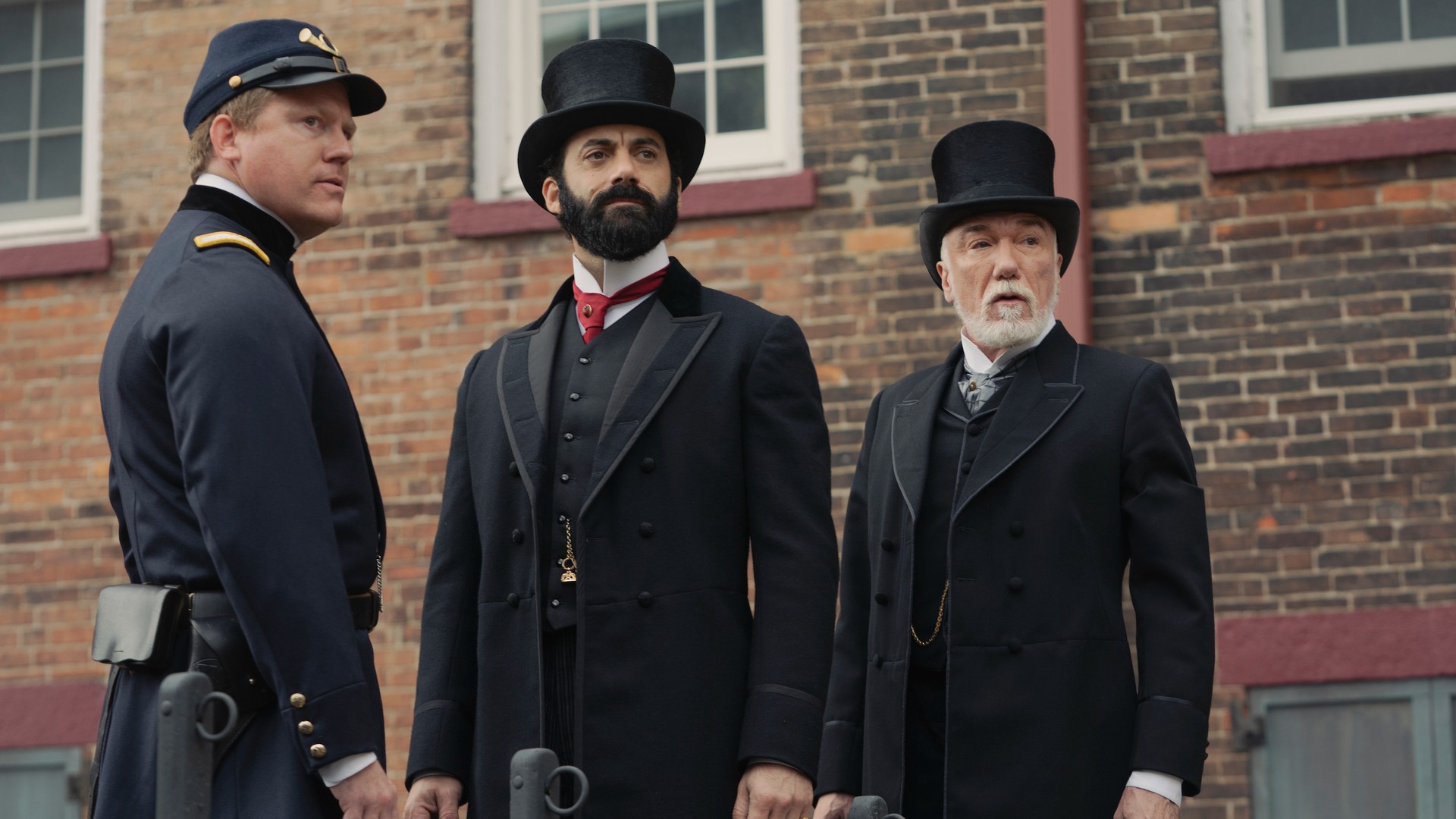
Fans of HBO original series The Gilded Age have been waiting patiently since March 2022 to find out what happens next in the battle between New York’s Old Money and Nouveau Riche.
Season two continues the ensemble format established in season one by centering the storylines of the Van Rhijins and Russells plus the stories of their respective household members. Peggy Scott’s plotline takes a deeper look into African-American society beyond the city. There’s also a new cast of guest stars and supporting characters creating tension for our established characters.
Season one left off with George Russell (Morgan Spector) successfully avoiding financial ruin because of the railroad accident. This season, George’s employees are growing frustrated with working long hours in the steel mills while George is concerned that the possibilities of strikes and boycotts will cost him his own livelihood and those who depend on his railroad company for theirs.
The goal of The Gilded Age is to recreate the history of the 1880s through its fictional and biographical characters but it is only natural that many in the audience will think about the ongoing SAG-AFTRA and UAW strikes while watching George and his workers. Den of Geek interviewed executive producer and director Michael Engler, executive producer David Crockett, writer and executive producer Sonja Warfield, and production designer Bob Shaw to get some more insight into how The Gilded Age Season 2 brings the conflict between George and the employees of his steel mill to life.
George’s positioning as the head of a railroad company and how he would be affected by the labor movement was discussed for a long time before recent headlines.
“The labor union storyline was something that [the creator] Julian Fellowes always wanted to do because historically there was a big strike around that time,” Warfield says.
“This was the beginning of the labor movement,” Crockett adds. “ The first Labor Day Parade was in 1882 and then Labor Day became a holiday in the 1890s.”
Season 2 is set in 1883 which indicates there are two possibilities for the major strike Crockett referred to as inspiring the conflict between George and his employees: the Great Southwest Railway Strike against Jay Gould’s company in 1886 and the Haymarket Riot in Chicago also in 1886 which began as a protest for an eight hour work day. The Gilded Age relies on historical advisor Dr. Erica Dunbar to investigate the real stories of the labor movement in the 1880’s to inform how George’s railroad company is portrayed on screen.
“Julian’s goal is always for people to watch our show and then go to Wikipedia and find out what the real history is,” Warfield says.
“It’s one of the things we love about Julian’s approach is that he keeps those historical underpinnings in there as a way of grounding the reality of our characters so that it’s not Bridgerton, for instance,” Engler says. “Bridgerton is a very fun period show, but it’s a fantasy, and part of its pleasure is that it can make up its own rules. However, we try to keep the rules of our show grounded enough in the authenticity of the period and history that you could feel like that’s what it would’ve been like to live there rather than being a kind of fantasy version of it.”
Later episodes will show the conflict from George’s perspective and the perspectives of the men leading the organization’s efforts.
“In the Gilded Age, like today, there’s incredible income inequality. And so the workers were not valued,” Warfield says. “Back then, if you were working in a factory and you were injured, employers said ‘Now you can’t work anymore and we’re not going to pay you and we don’t care about you and you’re useless to us’. During that time the workers were not humanized and we’re living in a similar time period where we have huge income inequality and dehumanization of people.”
Season two features scenes from George’s factory and the homes of his workers in Pittsburgh. The Gilded Age season 2 did not film in Pittsburgh but used locations in New York state that have preserved 1880s architecture.
“The Troy- Albany area keeps giving us these gifts, “ Shaw says. “In a nearby town, there was an old mill town because a lot of textile plants were along the river. So even though it’s supposed to be a steel mill, we used what remains. There also was worker housing that was just up the hill from this mill that was back in the days when it was a company town. We added dirt in the street, built the gate to the factory and we added some outbuildings, chicken coops, and things like that.”
George later on in the season travels to Pittsburgh to confront the threat of a strike.
“George has a private train car, which was a way that the millionaires traveled back in those days,” Shaw says. “So we had to build the inside of his private train car. And it’s incredibly elaborate. For a little tiny space, it has all the period molding details, all these little brackets running up the header on the train car. The area where you put your luggage is all tufted and upholstered, and all the blinds and the drapes and everything were custom-made for this thing. We even had special carpeting woven for the floor.”
Balancing the perspectives of George and his employees was one of the main challenges the creative team faced.
“We really want to make sure we get the labor story right,” Crockett says. “George is one of our main characters, so we really want to do him justice. And part of it is he is a bad guy in some respects, but he is a good man in other respects. Morgan [Spector] was really involved in portraying the complexities of the character.”
The labor unions are one of several main arcs this season. “We want it to feel like one big, great story of a city but the only way you can do that is by getting involved and really invested in individuals,” Engler says.
“These stories we’re telling resonate because they are true and people are being people,” Crockett adds.
How will George react to the rise of labor unions? Will he be able to avoid the violence of similar strikes from the 1880’s? Engler, Crockett, Shaw, and Warfield shared additional details with us about the labor unions and the other major plot lines but they will spoil future episodes. Look out in the middle of the season for a follow-up.
The Gilded Age season 2 premieres on HBO and streaming on Max on Oct. 29th at 9 p.m. with new episodes released every Sunday.
The post The Gilded Age Season 2 Reflects Our Current Labor Moment appeared first on Den of Geek.








